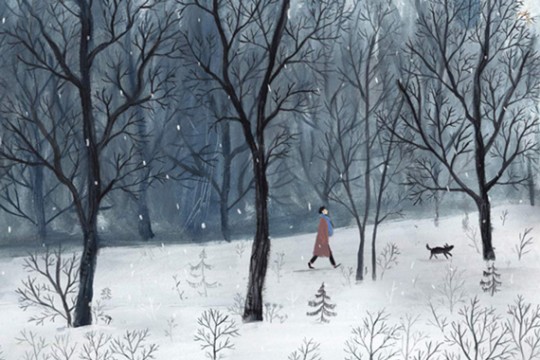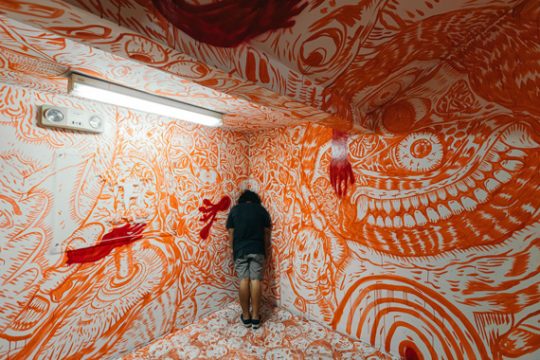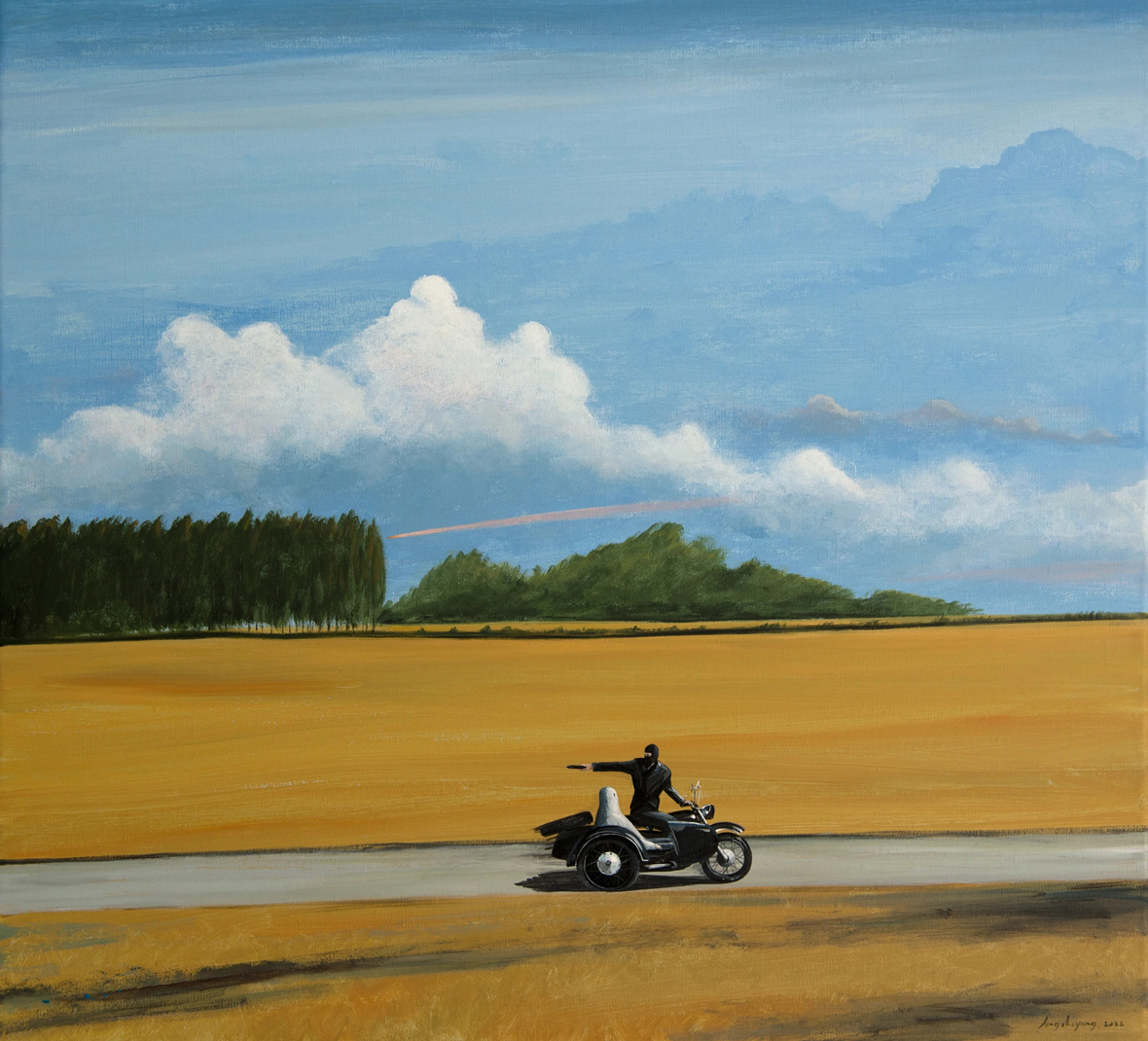
Sigmund Freud believed that dreams were a form of wish fulfillment, an altered reality designed by the unconscious mind. Despite how absurd that some dreams may be, it’s believed they’re ultimately rooted in truths. The works of Tianjin-based artist Jing Zhiyong treads deep into his personal dreamscapes as he seeks to uncover their deepr meaning. In these visions, a Coca-Cola vending machine sits on the moon; a rifle-wielding man walks beneath the night sky, half of his body engulfed in flames; and a violent spray of blood covers the side of a white barn, yet the blue skies above and the undisturbed snow of the foreground instill a calming quiet. On his canvases, these seemingly paradoxical images come together to evoke a sense of danger, loneliness, and grace all at once.
奥地利心理学家西格蒙德·弗洛伊德(Sigmund Freud)认为,梦是人生的奇境,是现实的写照,梦中荒诞不经的、空穴来风的画面绝非毫无意义,它们都是对现实的延伸。现居故乡的天津艺术家荆智勇(Jing Zhiyong)的创作便是围绕梦境、人和各种荒诞的事物展开。月球上的可口可乐自动售卖机、披星戴焰行走在荒野的狩猎者、美景下发生的凶案现场……这些看起来不着边际的画面组合,在结合了古典写实绘法、现实主义绘画风格、以及坦培拉画法(Tempera)之后,勾兑着他的梦境,一个关于独孤、危险却又美丽的矛盾世界。
Much like how the dreams that leave an impression are typically either the sweetest or the most horrific, Jing’s works is a masterclass in contrasts. Take for example, Rainbow Six, an acrylic painting depicting a peaceful countryside vista. The quiet landscape is interrupted by the appearance of a masked gunman escaping on a motorcycle, pistol in hand. In the sidecar, a bedsheet-donning ghost rides shotgun. This type of juxtaposition defines most of Jing’s paintings—an impending threat disturbing the otherwise serene environment.
Jing Zhiyong notes that these contrasts aren’t exactly intentional though. His approach to art making is largely intuitive, an expression of his own emotional states. But this output often shares parallels with his dream states, in both volatility and theatricality.
抛开那些难以在记忆中留下痕迹的梦,印象中能够记得的梦,大都关于噩梦和美梦,这种强烈的对比同样在荆智勇的作品中呈现。与碧蓝色天空相对的是摇摇欲坠的高脚椅、洁白如洗的墙壁上却是四溅的鲜血、白云和草滩上演激情枪击,乍看之下恍惚是视觉舒适的画面,却冥冥之中总有一种危险性;明明是暗藏杀机的故事,却讲述地如此平静。荆智勇承认并未刻意营造这种对比,他认为自己的创作仅仅是一种自我情绪的展现,而这,却又恰恰与梦彼此呼应,充满了随机与戏剧性,永远也无法料到会发生怎样的故事。
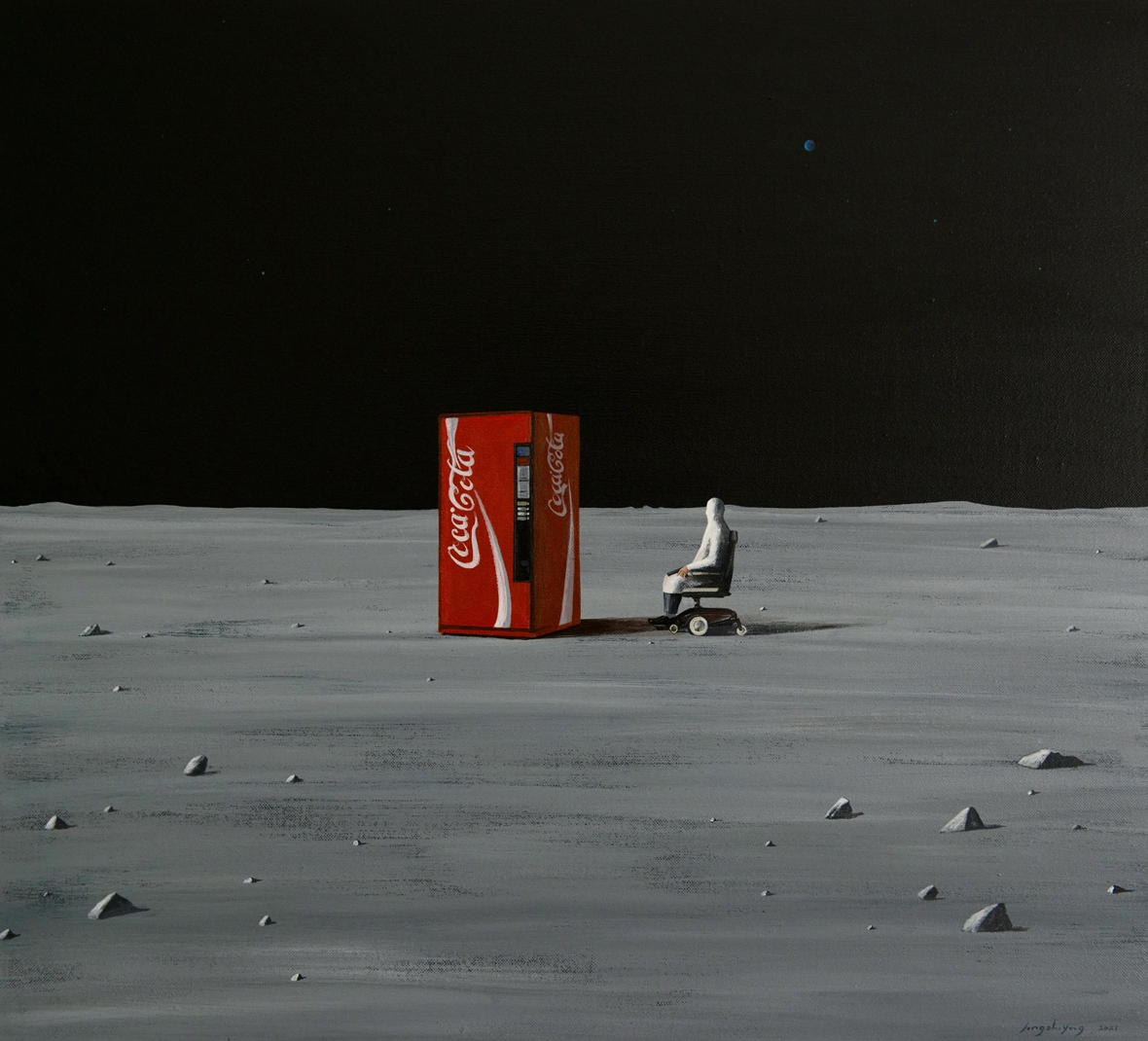
Another recurring element of Jing’s work is the use of scale. The main characters of his canvases typically appear minute within the scene, resulting in an unmistakable sense of isolation. This feeling of solitude is a theme that Jing relates to his childhood experiences as well as his observations of the current generation.
Growing up, the loss of close family members resulted in feelings of insecurity. Demeanor-less ghosts, firearms, and spectral shadows plagued many of his childhood nightmares—these same motifs now populate his canvases. “They’re not symbols of violence,” Jing explains. “These visual cues are more emotional in nature, tied to my sense of attachment.” The ghostly figures symbolize different matters depending on the context. On certain paintings, they represent his inner self. On others, they represent family members who’ve departed from the mortal coil.
The characters who appear on Jing’s canvases are also almost always turned away from the viewer. Some wear disguises while others cover their faces with items such as books. This is by design, a way of commenting on the powerlessness and silence of people when they’re faced with harsh realities. As Jing sees it, we’re living in an era of estrangement. The online world has caused a fissure between people in our offline existence. “As mankind progresses, the lonelier we become,” he says. “Technology is accelerating this sense of loneliness. The internet is giving people a false of sense of interconnectivity, when in reality, we’re the most divided we’ve ever been.”
Despite this bleak outlook, Jing doesn’t necessarily want his art to project negativity. The isolated characters of his canvases are typically shown in beautiful environments. There’s a sense of hope that prevails above all else.
不过可以确定的是,作品中的主人翁都形态渺小,孤独感四从画中散开来。论其背后的原因,一部分来源于荆智勇童年时期的经历,另一部分则是他对这个时代的理解。或许是年少时经历过多次亲人的离去,荆智勇从小缺乏安全感。蒙面幽灵、枪和孤影等画面时常萦绕在他的儿童梦境之中,这些都成了他长大后的创作线索。他解释道:“这些元素不是暴力的象征,更类似于一种个人情感的寄托。”就好比频繁出现的幽灵,那不是刻意描绘的形象,而代表着他的内心,抑或是远去的家人。人在一些现实面前往往是无力言语、或是无力反抗的,荆智勇用 “X” 来表达相同的寓意。
而对于当下这个人与人线下疏离的时代,他认为:“人类愈发进步,孤独感越发严重,很多科技都加速了人类通往孤独世界的速度。看似无时无刻不在一起的我们,实际上距离感是前所未有的。”他并不希望以创作来传达消极的情绪,人物背后秀色可餐的美景,仿佛在向观众传达一种 “爱与希望” 的旨意。
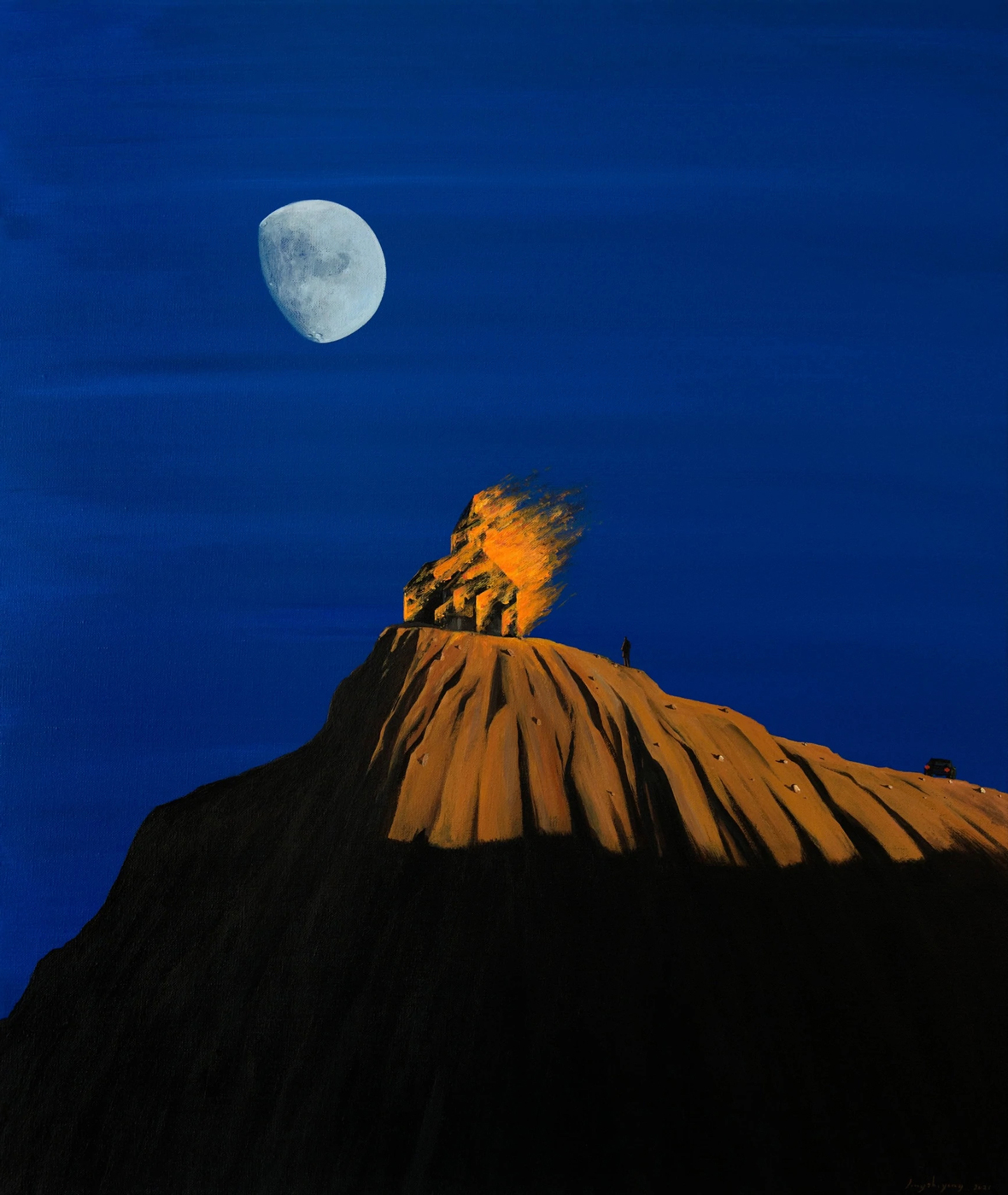
Jing also cites montages, a film-editing technique in which short shots are sliced together, as a source of influence for the non-linear narratives he works with. In some ways, Jing’s canvases remind of the camerawork of cinematic legend Wim Wenders, in how empty scenes can be imbued with meaning. Alfred Hitchcock is also a source of influence, in the ways that Jing plays with suspense. “Whether it’s films or tidbits from my personal dreams, I want my paintings to give these fragmented visuals a more cohesive shape,” he says. “The stories of my work are purposefully non-linear. In fact, they’re malleable—they may change on a whim based on my own thoughts and feelings.”
除了梦的离奇,电影中蒙太奇拍摄手法也是荆智勇的创作灵感来源。画作中的故事并非线性,而往往是故事发生的某一个戳面,引起观众对故事的经过产生联想。通常是维姆·文德斯式空旷的场景、融入希区柯克式扣人心弦的悬疑。他解释说:“电影镜头、或是一些反复在梦中出现的线索,我都希望通过绘画去延伸,这些碎片信息都是我们延展思维边界的另一种方式。而作品中的故事情节不一定都具有线性的发展,因为有时候它会随着我自己的思绪和感受的变化而改变。”
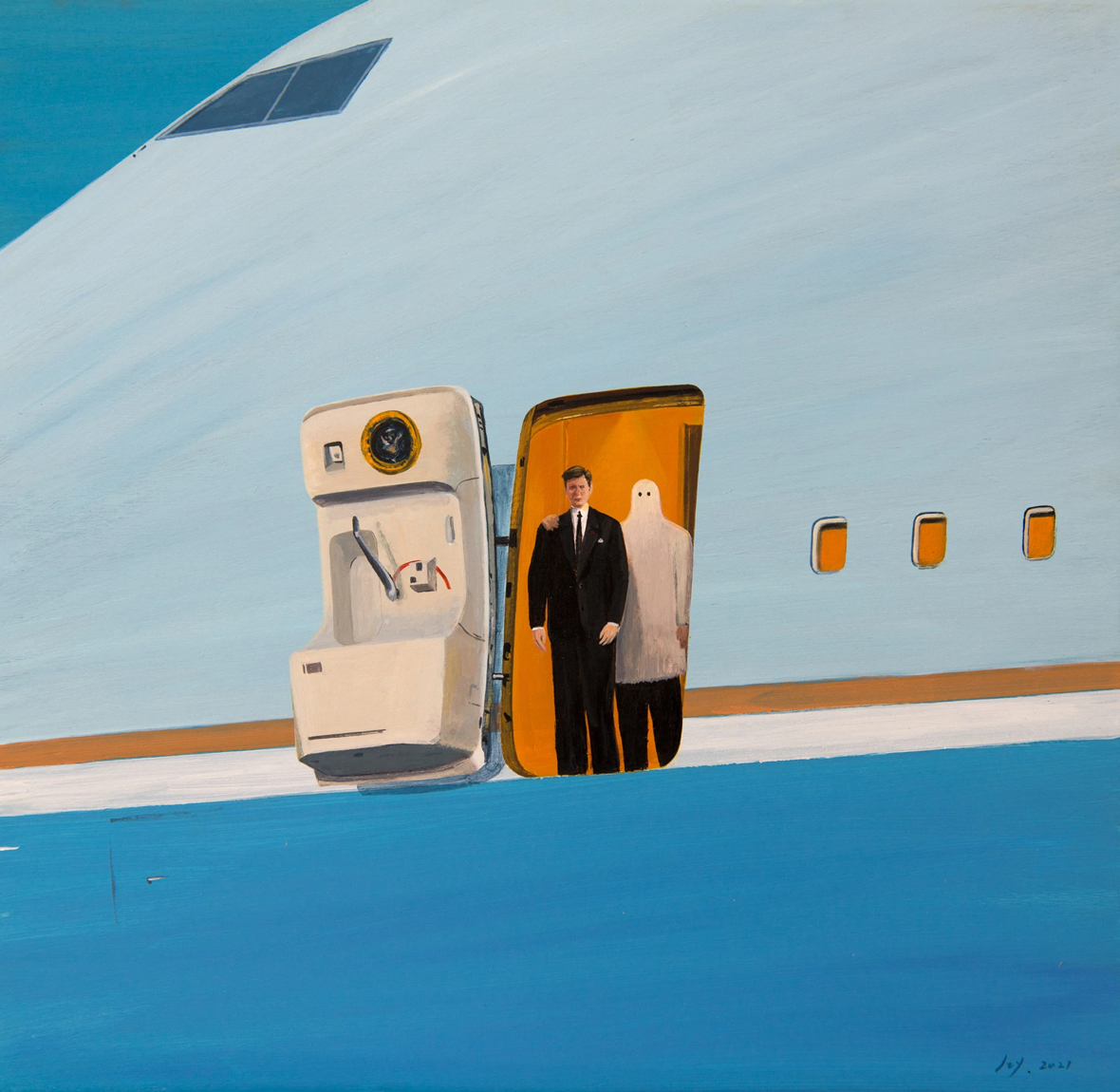
No matter how strange some of Jing’s paintings may appear, there’s comfort and peace to be found. His works captures the fickleness of life and of our unconscious mind, reveling in the beauty that can be found when you keep an open mind and a humorous outlook to it all.
Jing is currently working with G Art Gallery to throw a new exhibition in Hong Kong where 30 to 40 of his paintings will be on display. The show will be open to the public around mid-July; you can learn more about it here.
无论画中的故事再怎么奇情、荒诞,荆智勇的创作总会带给观众舒适的感受,这仿佛在告诉我们,人生在世有太多不可控,没人知道现实会发生什么,但同时,现实也很美好,你还可以转身拥抱鲜艳,收获豁达和美好,这些共构这个矛盾的世界,也恰恰在作品中体现出一抹独特的幽默感。最近,荆智勇正与一些画作收藏家于香港嘉德 G Art 空间筹办一场展览,现场将会有 30~40 幅作品展出,计划于七月中旬进行。
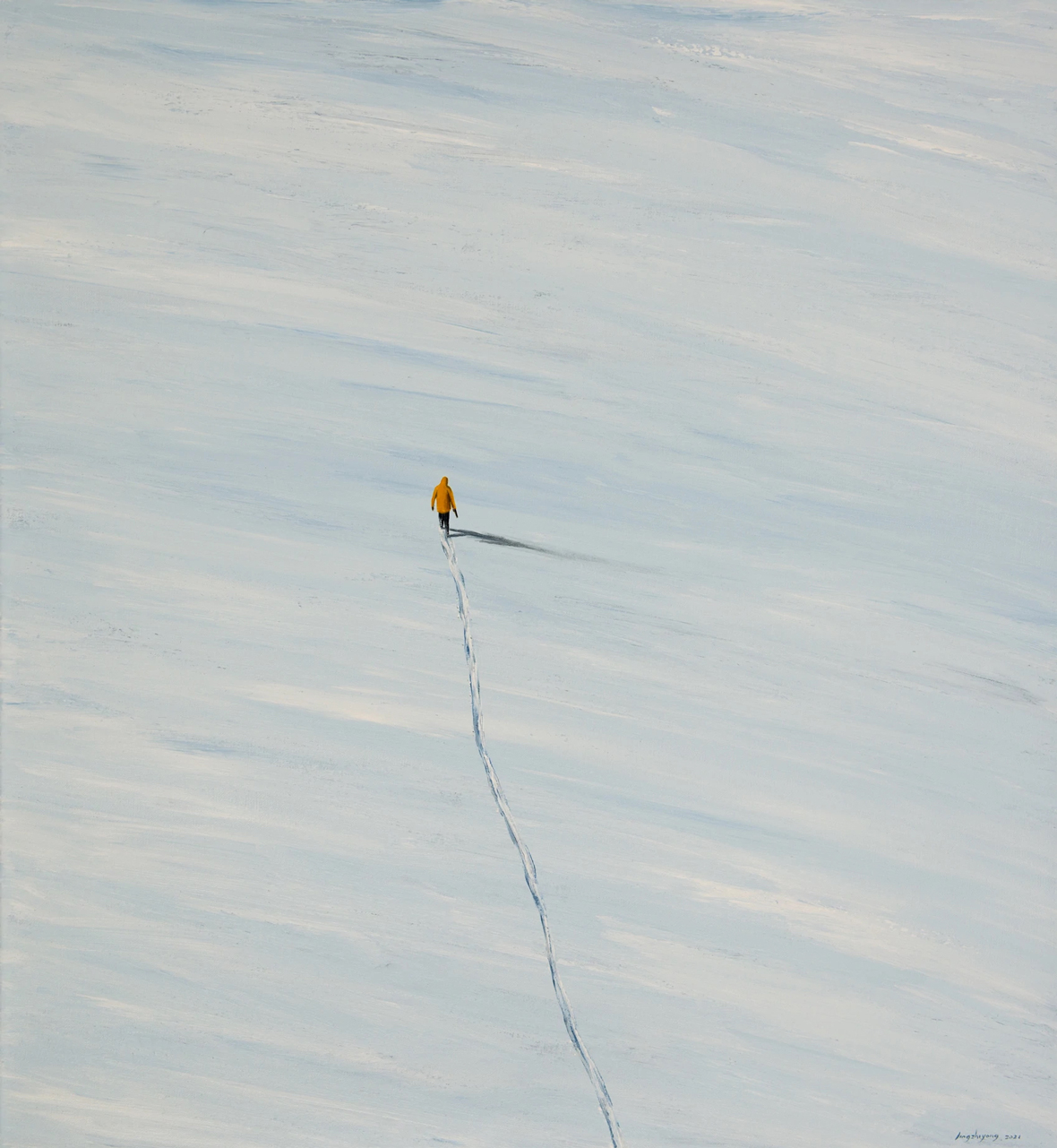
Like our stories? Follow us on Facebook and Instagram.
Website: www.jingzhiyong.com
Instagram: @jingzhiyong
Contributor: Pete Zhang













